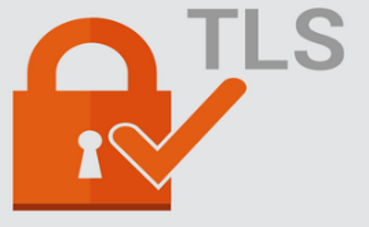TLS Security Profiles
Sup 204
40% (Public Comment)
Two new Secure Connection profiles are added to make DICOM consistent
with the latest RFCs and best practices for TLS security. These are:
- A Best Practices TLS Profile that requires compliance with the IETF
BCP 195 Recommendations for Secure Use of Transport Layer Security
(TLS) and Datagram Transport Layer Security (DTLS). This profile
requires that TLS negotiation start with the strong security
protection parameters, and allows progressive negotiation of weaker
protection down to a minimum protection limit.
- A Non Downgrading Best Practices TLS Profile that does not permit
negotiation of weaker protections. This profile will refuse a
connection that is not the initial strong level of protection.
Both the old Basic TLS Secure Transport Connection Profile and the old
AES TLS Secure Transport Connection Profile are retired. The methods
for breaking the old profiles are well known. The Internet Engineering
Task Force (IETF) strongly recommends the updates introduced with this
supplement.
The scope and field section was presented and improvements were
incorporated during the discussion.
It was suggested to improve the general motivation and context around
use cases for this supplement.
The supplement was voted to go out for public comment.
View details »
View overview »
Realtime Video
Sup 202
20% (First Read)
This Supplement describes a new DICOM Service for the transport of
real-time video and associated medical data.
The Real-Time Video Service supports interoperable devices inside the
Operating Room and beyond, enabling a better management of imaging
information.
Professional video (e.g., TV studios) equipment providers and users
have defined a new standardized approach for conveying video and
associated information (audio, ancillary data, metadata…) enabling the
deployment of equipment in a distributed way (vs. peer-to-peer).
This supplement defines an IP-based new DICOM Service for the
transport of real-time video including quality compatible with the
communication inside the operating room (OR).
The SMPTE ST 2110 suite, elaborated on the Technical Recommendation
TR03 originated by the VSF (Video Services Forum) is the technical
platform.
This supplement defines mechanisms to specify medical metadata to
follow in the stream of the video signal.
The format of recording is out of the scope of the supplement, as well
as the way of replaying the recorded videos. The supplement covers a
method for feeding the recorder with the synchronized videos and
associated metadata.
Among going through the new open issues a longer debate on the
distinction between medical archives and video recording storage in
general occurred.
To illustrate typical use of this supplement typical surgeon use cases
were presented.
The meeting members discussed further specific important aspects:
- Time Precision, especially sub micro seconds
- Time alignment between real time video and caching of frames from xray CCDs
- Precision Time Protocol
The specific art of linking the video stream into the DICOM object
proved to be an interesting topic, especially the question of
transporting the payload within or outside of the DICOM object. There
was no concluding decision.
Around attribute details on patient, study, series and instance level
necessary for real time video, it was suggested to work this out in
more detail.
The review of the draft supplement will continue work up to public comment.
View details »
3D Printing
Sup 205
20% (First Read)
This supplement adds a new DICOM IOD to encapsulate Stereolithography
(STL) 3D model file formats.
This allows 3D manufacturing models to be exchanged between various
types of equipment using DICOM messages. This adds the ability to
store, query and retrieve 3D models as DICOM objects.
3D model files are a type of document that contains geometric
instructions to create physical objects by a 3D printer or milling
machine.
To exchange these 3D models in an efficient manner in an imaging
environment, especially as part of patient care planning and the
patient’s imaging record, it is useful to be able to “wrap” these
model documents in a DICOM container.
This supplement only supports the binary encoding of STL for DICOM
encapsulation.
This was a first reading of the Supplement.
With the help of the overview presentation slides the main use cases
were illustrated. They were to create, review, update and print 3D
manufacturing models in the form of encapsulated STL format.
Different options when using encapsulated MIME for this supplement
were illustrated and discussed.
In a further discussion, working group 6 advised against supporting
preview and real model distinctions. This would make the supplement
unnecessary complex.
The review of the draft supplement will continue to work up to public comment.
View details »
View overview »









